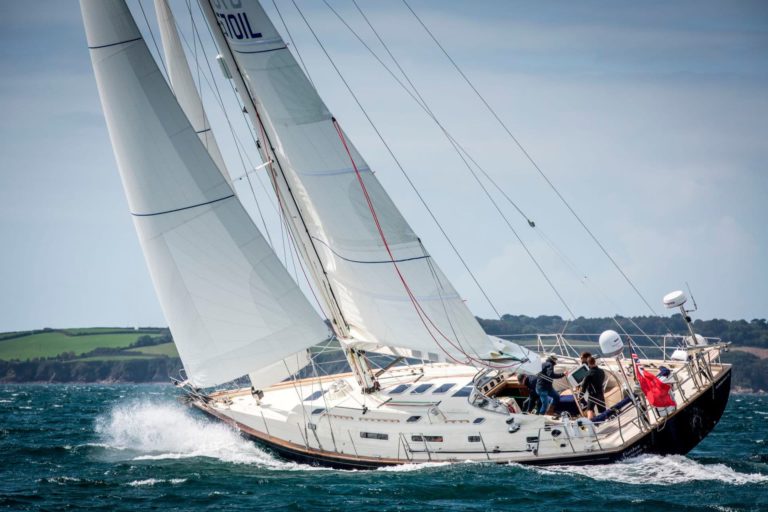Alongside in a Headwind

A high windage boat, trying to come alongside in a 25 knot headwind, has a problem — call it a challenge, if you’re more positively minded.
The way to accomplish it is to accept that it won’t be easy. Know your boat, and its handling well, and practice in lesser winds first. Have your lines and fenders organized in advance, pay attention, and be careful.
These pieces of advice are fairly general. A more specific one would be: "Take it slowly," except that to be more realistic it has to be: "Take is as slowly as possible." This is because the wind demands that the boat have very strong "steerability", and this steering authority comes
i) from motion through the water, and
ii) from keeping the power on.
So, you may have to maintain more speed up than you would like, although, on the plus side, the head wind will slow you down a little too.
This is a very dynamic docking. Things change quickly. You have to do two contradictory things:
i) think well ahead and
ii) throttle and steer very actively, moment by moment.
What’s the problem? The trouble arises for several reasons. Firstly, a headwind yaws the boat. This turning force varies by boat, being relatively mild and slow with a low-profile displacement hull sporting a substantial external keel, but tenacious and rapid for a planing hull boat. But in almost any boat, the wind tries to blow the bow "off".

Furthermore, if the wind turns the boat a little to port, for example, then the whole hull becomes an inclined plane, and some of the wind’s force now pushes it laterally (also to port, in this instance).
So, now we have a boat turning and drifting sideways. The skipper’s best response is to turn to starboard, perhaps adding in extra engine power to improve steerage. But notice now which way the propeller’s discharge current is pushing the boat: to port.
It doesn’t take long, under these circumstances, to use up your maneuvering room, and come crashing heavily into the dock with the port bow. By the time you’re halfway through this disastrous maneuver, you’re already beyond the point of no return. You can probably see it coming, and yet can’t do a thing about it.
Let’s say you have the skill to hold the boat directly head to wind. This would avoid the whole problem, except that you have to turn into the slip eventually, and once you turn, the wind may take over.
What’s the solution? Not to despair: it gets easier after the first few (thousand) times. Once you realize what’s actually going on, and that the boat’s behavior is neither random nor capricious, you can handle the situation better.
Stay very focused. A difficult docking such as this does not necessarily require lightning reflexes (although they help!), but it does demand intense mental concentration.
When you turn (or when the wind turns you), turn very little, and straighten out early.

Stay ahead of your boat in your thinking. Don’t wait until the wind has reduced your options to nil. You really have to anticipate what’s going to happen next. There just isn’t time to make observations, assess them, plan a response and then begin to carry it out.
A little extra speed through the water often helps the hull to track straighter, less susceptible to "wind yaw", and it affords you better steerage. The speed, however, is definitely a two-edged sword. The faster you go the faster things happen. The faster you go the harder it is to get the boat stopped.
While you’re in reverse gear, putting the brakes on, as it were, your steering ability may be precarious, so in this sense it’s good to go as slowly as possible. In the real world, you’ll have to find the optimal speed by experience and experimentation, and on balance it will probably be a little faster than bare idle speed.

If you’re ever caught off guard by a wind such as this, remember that you can do "power practicing". Try a few simulated dockings out on the open water, before coming into the harbor, and then drive back and forth past the slip a few times. You’ll get a quick course on how your boat handles in the present conditions.
On your "final" approach, turn a little too little rather than a little too much. It’s much easier to extricate yourself from a failed docking if the boat is upwind and head to wind, whereas if you get blown on an angle into the boat abaft, there is no elegant way out.
Conclusion — There is no conclusion to boat docking. In the unlikely event that we ever think we have headwind dockings completely licked, we’ll find ourselves docking in a new boat which handles differently, or in a shifting wind, or in one which is one or two points off the bow. We will realize yet again, with joy and eagerness, that there will be many future opportunities to hone and refine our close quarters maneuvering skills.